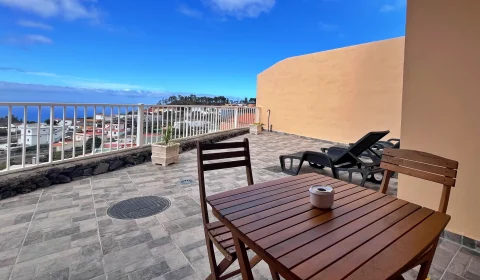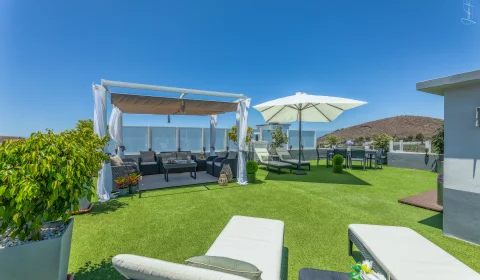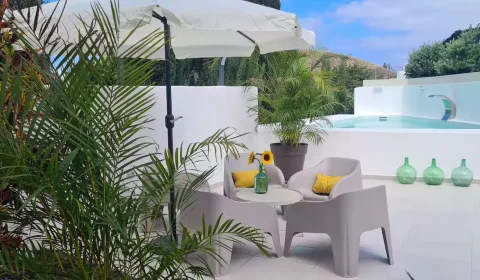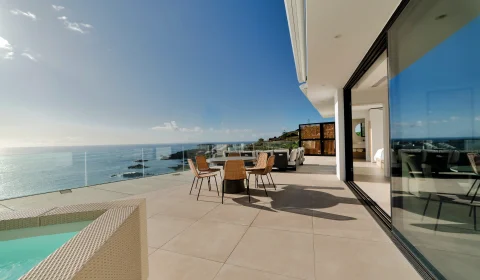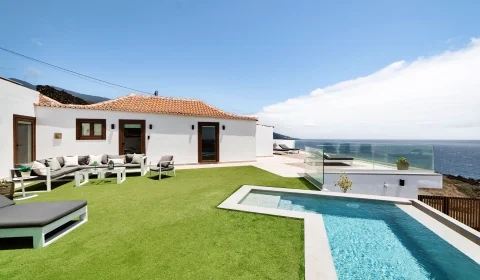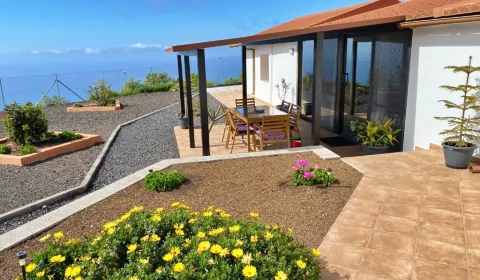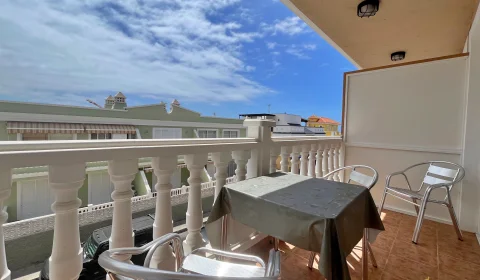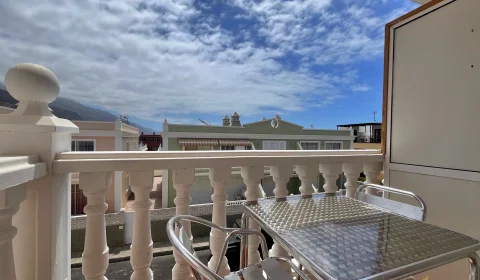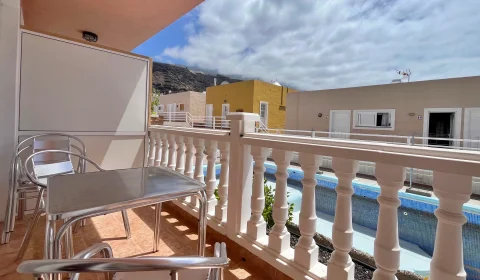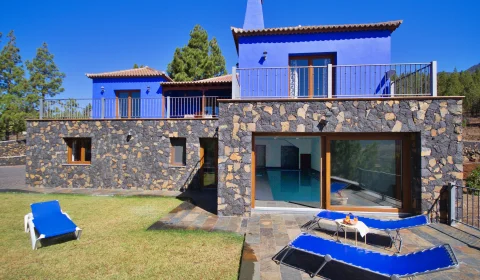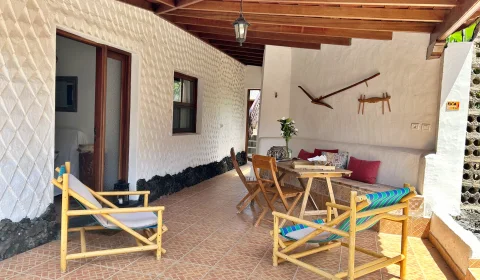Have you ever crossed a volcanic landscape so spectacular that it can’t be compared to any other in Europe?
The Canary Island of La Palma – also known as the “Isla Bonita” – offers exactly that. With its volcanic origins, vibrant natural colours, and unique topography, it is one of the most fascinating travel destinations in the world. Especially popular is the famous Ruta de los Volcanes, which attracts thousands of nature and hiking enthusiasts every year. This impressive trail leads over the volcanic ridges of the Cumbre Vieja Natural Park and offers a hiking experience that is truly one of a kind in Europe.
Volcanic landscapes like no other
The "Ruta de los Volcanes" is one of the most breathtaking hiking routes in the Canary Islands. It takes you through stunning volcanic terrain, past ash fields, solidified lava flows, deep craters, and majestic pine forests. As you walk along the mountain ridge of Cumbre Vieja, the central volcanic spine of the island, you’ll pass through a constantly changing natural landscape – a setting that has no equal on the European continent.
The route begins at Refugio El Pilar in the centre of the island and stretches 16 kilometres to the village of Los Canarios in the municipality of Fuencaliente. For those who wish to complete the full trail, an additional 6-kilometre extension leads to the southern tip of the island and the lighthouse at Fuencaliente – a total of around 23 kilometres.
Holiday accommodations La Palma
Stages and difficulty level of the Ruta de los Volcanes
The route can be tackled in several stages, making it suitable for hikers of different experience levels. The most popular variant – from Refugio El Pilar to Los Canarios – takes approximately 5,5 hours. Those continuing all the way to the coast should allow about 8 hours of walking time.
The hike is considered moderate to challenging. The beginning is particularly demanding: the first four to five kilometres involve a continuous ascent, followed by a descent – with an altitude difference of around 2.000 metres. Walking on volcanic ash adds an extra level of difficulty, especially towards the end of the route.
Thanks to the mild climate of the Canary Islands, the trail is accessible nearly all year round. However, on particularly hot days, it is advised to either avoid the hike or take breaks accordingly.
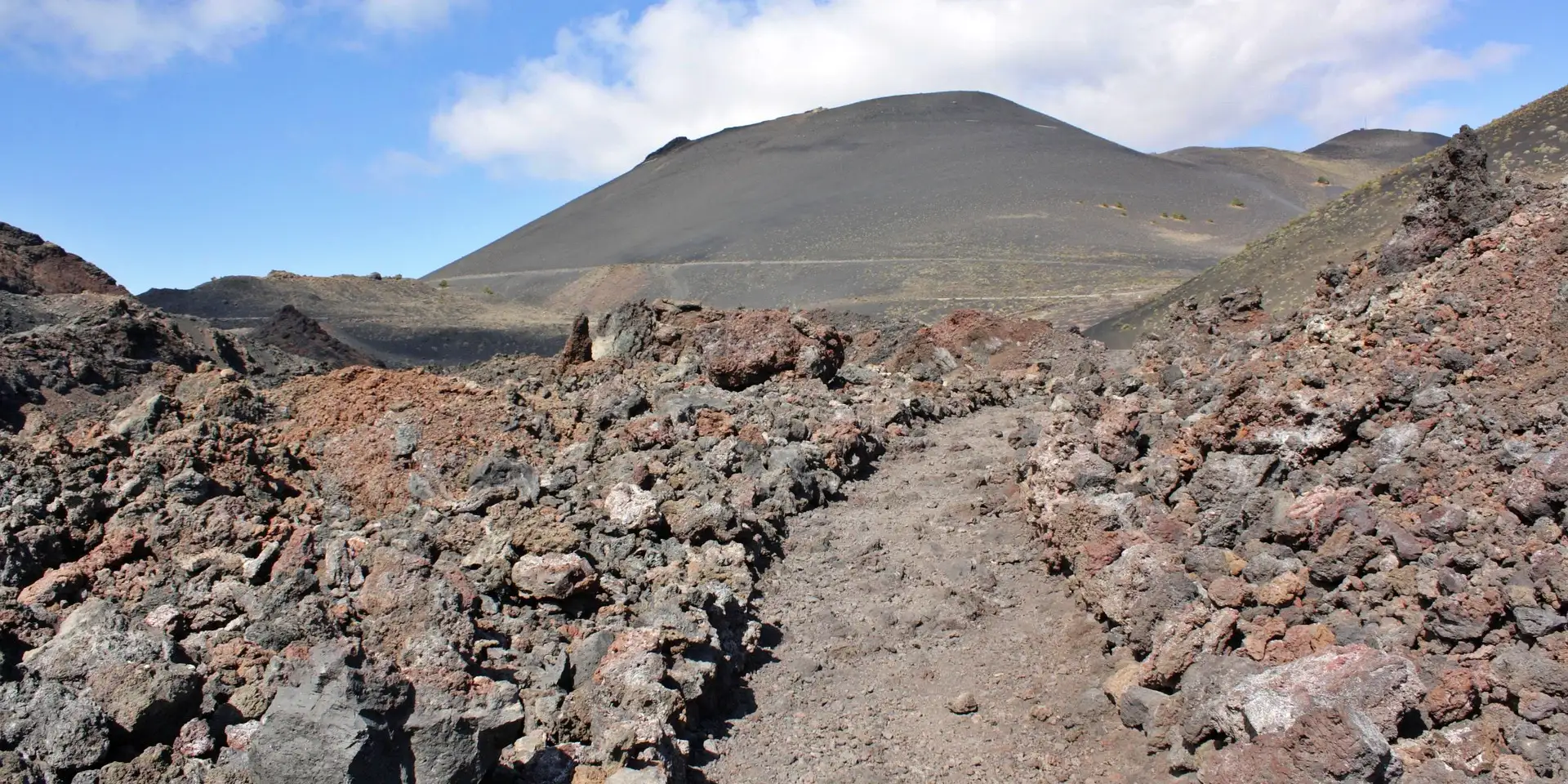
Key landmarks along the volcano route
The walk starts with a steady climb along volcanic ridges. The first prominent natural landmark is the San Juan volcano, also known as Hoyo Negro, which saw the first documented eruption on the island in 1949.
The trail continues over the Duraznero volcano and up to the highest point of the route: the volcano Las Deseadas. Standing at 1.945 metres, it is the highest peak of the Cumbre Vieja and offers breathtaking panoramic views over the entire island – undoubtedly one of the most stunning vistas on the trail.
From this highest point, the long descent begins, passing over the Llano de Guanches. Time and again, new volcanic landscapes unfold before your eyes, until you eventually enter the characteristic Canarian pine forest, which accompanies you for the final kilometres to the village of Los Canarios. Once there, it’s advisable to take a taxi or bus back to the starting point – unless you plan to extend the route to the island’s southern tip.

Route extension: Visit to the new Tajogaite volcano
A fascinating extension of the route is a visit to the Tajogaite volcano, which emerged during the volcanic eruption of 2021 – the most recent eruption on La Palma. Located on the western slope of the Cumbre Vieja, it has dramatically transformed the island’s landscape.
Access to Tajogaite is via a separate hiking path starting at Llano del Jable and ending in Las Manchas – a route of around 8 kilometres. This trail allows visitors to experience the power of an active volcano up close: ash fields, steaming craters, and hardened lava flows provide a powerful impression of the eruption’s magnitude. Anyone interested in geological phenomena should not miss this extension.
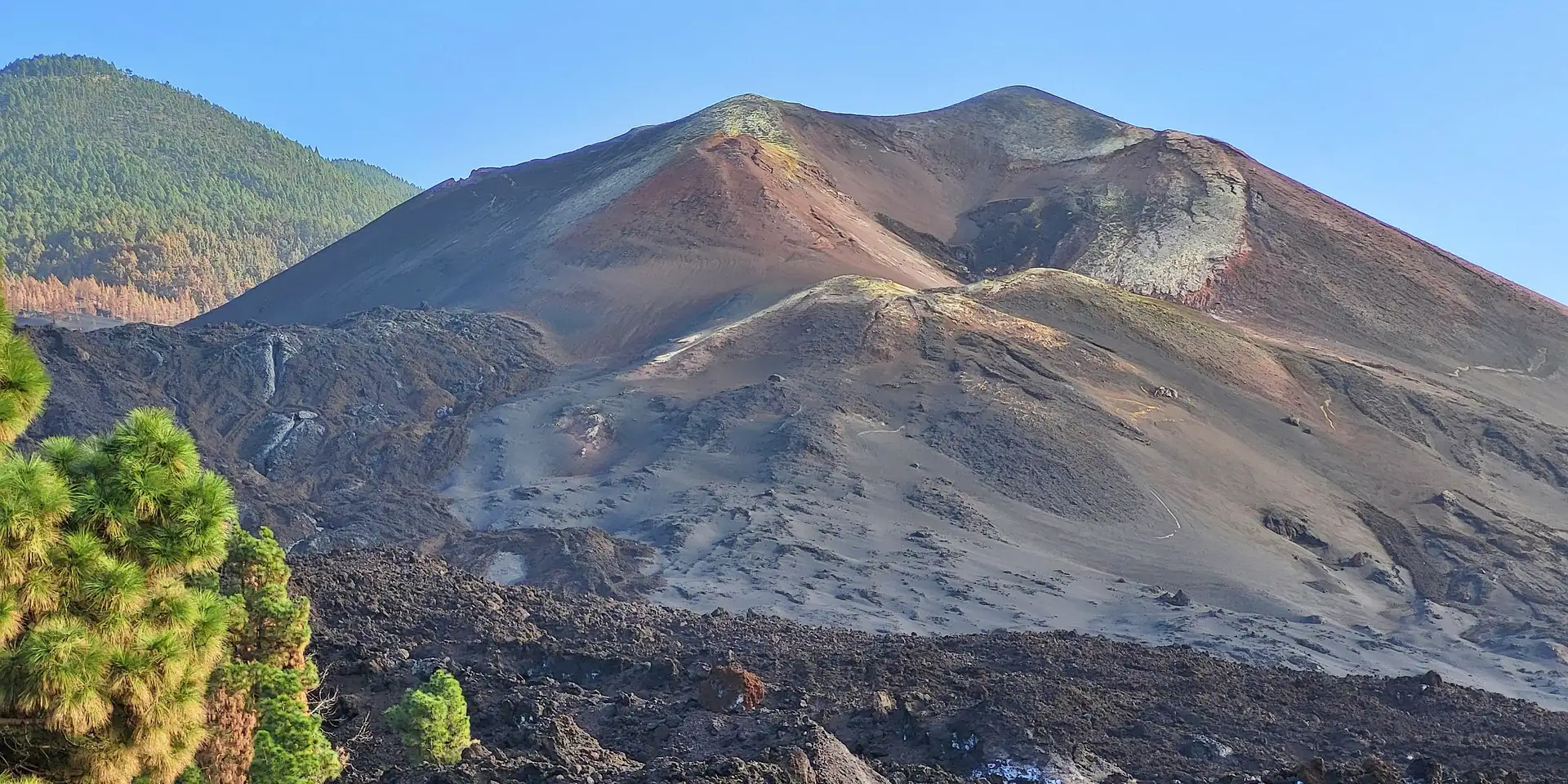
Tips and recommendations for your hike
Bring plenty of water: There are no water sources along the route. Especially in warm temperatures and during physical exertion, it’s crucial to stay hydrated..
Wear sturdy footwear: Hiking on volcanic ash and lava rock is challenging, so solid hiking boots are essential.
Check the weather: Weather conditions on La Palma can change quickly, particularly in the mountains. Always check the forecast before setting off.
Sun protection and clothing: Sun protection (hat, sunscreen) and breathable, weather-appropriate clothing are strongly recommended.
Perfect planning with us: Holiday homes & car hire on La Palma
So that you can enjoy your hike stress-free, we’ll take care of the rest: We arrange suitable holiday accommodation on La Palma – from charming countryside cottages and modern villas with pools to seaside apartments with stunning views. Whether you're travelling solo, as a couple, or with family – we’ll find the perfect place for your stay on the “Isla Bonita.”
We also offer reliable car hire at fair prices, so you can explore the island at your leisure – including remote nature spots and quaint mountain villages.
Contact us today to plan your perfect trip to La Palma – and experience the breathtaking beauty of the Ruta de los Volcanes up close.
Email:
Phone +34 675 400 700
 DE
DE  EN
EN  ES
ES 